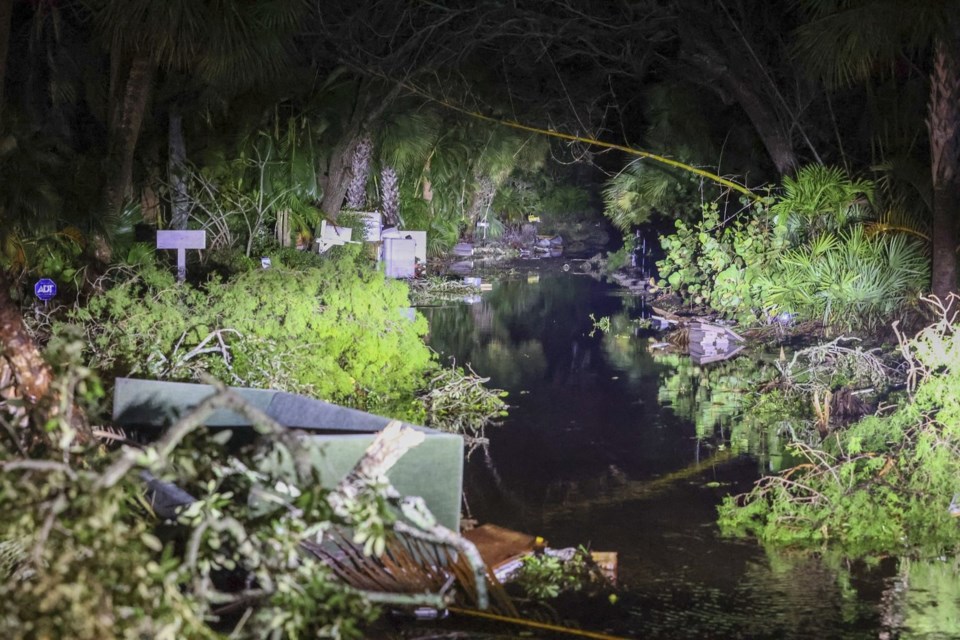In the days before hit Florida, forecasters were worried it could send as much as 15 feet (4.5 meters) of water rushing onto the heavily populated shores of Tampa Bay.
Instead, several feet of water temporarily drained away.
Why? “Reverse storm surge” is a familiar, if sometimes unremarked-upon, function of how hurricane winds move seawater as the storms hit land — in fact, it has before.
In the Northern Hemisphere, tropical storm winds blow counterclockwise. At landfall, the spinning wind pushes water onshore on one end of the eye and offshore on the other. Picture drawing a circle that crosses a line, and see how the pencil moves toward the line at one point and away at another.
The most pronounced water movement is under the strong winds of the eyewall, explains Brian McNoldy, a University of Miami senior researcher on tropical storms.
Milton's path toward the central part of Florida's west coast was clear for days, raising the possibility that Tampa Bay could bear the brunt of the surge. But it is always tricky to predict exactly where landfall will happen — and when, which can be important because a daily high tide can accentuate a surge.
To be sure, hazardous wind, rain and some degree of surge can happen far from the center. But the exact location of landfall makes a big difference in where a surge peaks, McNoldy said. Same goes for a reverse, or “negative,” surge.
Ultimately, the center of east-northeastward-moving Milton made landfall Wednesday night at Siesta Key, near Sarasota. It is about 70 miles (112 kilometers) south of the city of Tampa.
That meant fierce onshore winds caused a storm surge south of Siesta Key. The National Hurricane Center said Thursday that preliminary data shows water rose 5 to 10 feet (1.5 to 3 meters) above ground between Siesta Key and Fort Myers Beach.
Meanwhile, the water level abruptly dropped about 5 feet at a near Tampa late Wednesday night.
Hurricane Irma caused a similar effect in 2017. So did Ian in 2022, when people strode out to see what was normally the sea bottom.
In any storm, “that’s an extremely bad idea," McNoldy says. “Because that water is coming back.”
Indeed, water levels returned to normal Thursday morning.
Jennifer Peltz, The Associated Press



